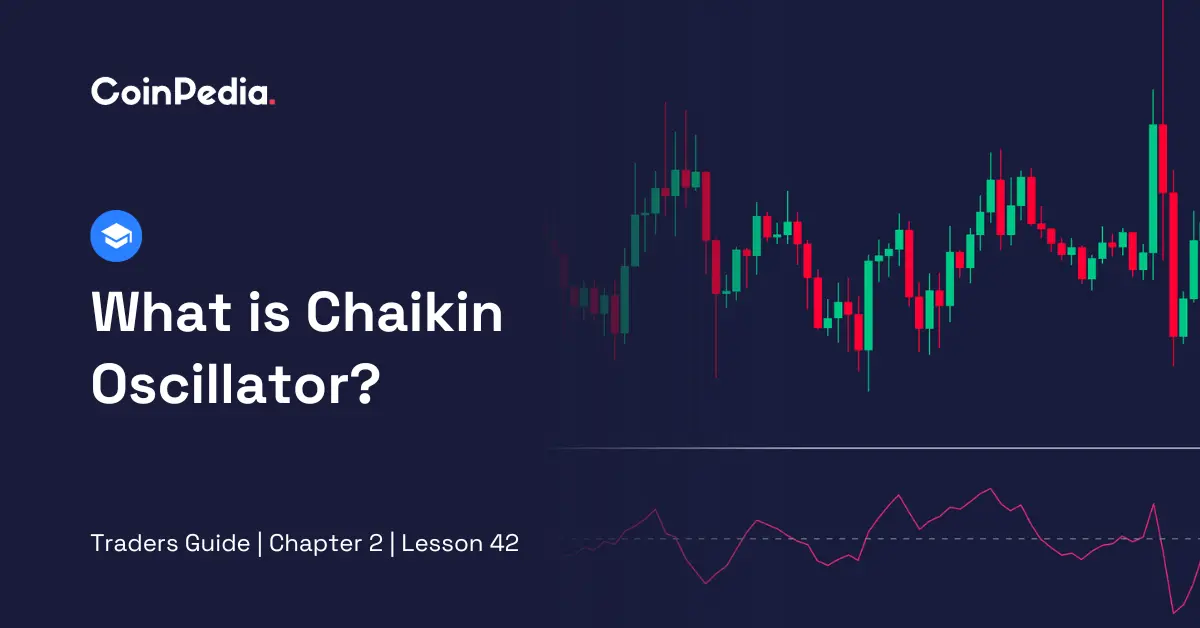
CO is now a very popular name among crypto traders. The Chaikin Oscillator is one of the best indicators used to analyse the strength of a price trend based on trading volume. Though it was originally launched decades ago, this indicator is still widely used in trading, which is enough to explain how much traders love this indicator. Time to delve deeper into understanding this indicator.
The Chaikin Oscillator is a powerful tool created by Marc Chaikin. Its main job is to keep an eye on how money is flowing in and out of an asset. It does this by checking out the Accumulation/Distribution Line of the Moving Average Convergence Divergence. It is basically a way to see if an asset is getting more love from investors or if they are starting to lose interest.
The Chaikin Oscillator is like the MACD for the Accumulation Distribution Line. The ADL comes from the Close Location Value, comparing high, low and closing prices. If the closing price is below the midpoint, CLV is negative; if above, it is positive. The ADL is the cumulative CLV multiplied by the volume. So, the Chaikin Oscillator predicts changes in the ADL, giving you a heads-up on where the money might be headed in the crypto market.
Here is the formula to calculate Chaikin Oscillator:
N = (Close – Low) – (High – Close) / (High – Low)M = N * Volume (Period)ADL = M (Period – 1) + M (Period)CO = (3-day EMA of ADL) – (10-day EMA of ADL) |
In order to explain this calculation easily, we can break down this into four parts:
Let’s learn how to launch the Chaikin Oscillator indicator on a TradingView Chart. Here are the prime steps to follow:
In general, the Chaikin Oscillator indicator gives two signals:
When the Chaikin Oscillator crosses above the zero line, it is a sign of potential upward momentum.
If the Chaikin Oscillator’s movement differs positively from the price (when the oscillator is heading up, but prices are not following suit), it suggests a possible upward trend.
If the Chaikin Oscillator dips below the zero line, it signals potential downward momentum.
When the Chaikin Oscillator moves differently from the price in a negative way (if the oscillator is on a downward journey, while prices are staying positive), it hints at a potential downward trend.
Also Read: Using Williams %R for Smart Crypto Trading Decisions
In conclusion, the Chaikin Oscillator, developed by Marc Chaikin, serves as a valuable tool for assessing money flow in and out of assets. It monitors the Accumulation/Distribution Line of the Moving Average Convergence Divergence, aiding investors in measuring market sentiment. This article elucidated its calculation process and provided steps for implementing it on TradingView charts. Interpreting Chaikin Oscillator signals, whether bullish or bearish, offers insights into potential market trends. By understanding and utilising this indicator, traders can make more informed decisions in the dynamic world of digital finance.
CoinPedia has been delivering accurate and timely cryptocurrency and blockchain updates since 2017. All content is created by our expert panel of analysts and journalists, following strict Editorial Guidelines based on E-E-A-T (Experience, Expertise, Authoritativeness, Trustworthiness). Every article is fact-checked against reputable sources to ensure accuracy, transparency, and reliability. Our review policy guarantees unbiased evaluations when recommending exchanges, platforms, or tools. We strive to provide timely updates about everything crypto & blockchain, right from startups to industry majors.
All opinions and insights shared represent the author's own views on current market conditions. Please do your own research before making investment decisions. Neither the writer nor the publication assumes responsibility for your financial choices.
Sponsored content and affiliate links may appear on our site. Advertisements are marked clearly, and our editorial content remains entirely independent from our ad partners.
Bitcoin (BTC) price has closed 2025 trading below crucial support levels around $100k and 90k.…
Trump Media and Technology Group Corp. (Nasdaq: DJT) has announced plans to distribute a digital…
Banking-focused crypto projects are fast becoming one of the most relevant sectors in the market…
As investors look ahead to 2026, the question is shifting from what already dominates the…
Ethereum and Solana may be setting up for their next big breakout, but one thing…
Story Highlights The live price of the OFFICIAL TRUMP TRUMP memecoin cools near $5.66 as…